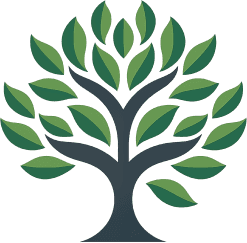8 May 2024 - How to make it happen, to move us from talking to doing.
By Peter Lawrence, Director
In 2022, following the work of Abi Richards and Jodie Walls we engaged 2 more interns from The University of Liverpool, Glory and Juno, to explore a further research question, ,
Designing for Intentional Inclusion,
How to make it happen, to move us from talking to doing.
What follows is the executive summary of their research. If you would like to read the full report, please get in touch.
As the focus and importance of Diversity, Equality, and Inclusion (DE&I) has been increasing in recent years, it is imperative that organisations consider what they will do to achieve an inclusive and diverse organisation.
Most organisations state that they are promoting DE&I but the data shows that there is still more to be done in this area. The previous research conducted by Richards and Walls (2021) found that it is possible to design diversity, equality, and inclusion into an organisation, and that it has numerous benefits for the organisation.
In this report, we take this a step further to help highlight how organisations can design diversity, equality, and inclusion in their workplace.
Partnering with the European Organisation Design Forum and One Peter Four, we analyse how organisations can effectively design and embed diversity, equality, and inclusion into their workplaces.
We were commissioned to carry out this research by One Peter Four who hold the belief that effective organisation design requires a humanistic approach applying an Organisation Development (OD) mindset. Organisations consists of complex and social processes with people at the centre. From Jessica Nordell’s (2021) book, ‘The End of Bias,’ we found an inspirational quote that profoundly suggests how diversity, equality, and inclusion can be designed into an organisation.
“The individual who acts with bias engages with an expectation instead of reality. That expectation is assembled from the artifacts of culture: headlines and history books, myths, and statistics, encounters real and imagined, and selective interpretations of reality that confirm prior beliefs. Biased individuals do not see a person. They see a person-shaped daydream.”
Nordell (2021)
As the leading researchers, we are delighted to share our findings with a hope of our work contributing to the larger community for the better.
Using our research and that of Richards and Walls (2021) we wish to highlight the difference between transformational and transactional dynamics.
Whilst the transactional aspects are important (plans, processes etc) , we conclude that it is only when they are delivered in the context of the transformational aspects (leadership, purpose, culture) will we begin to witness the desired changes.
By applying the concepts advanced by W. Warner Burke and George Litwin (1992), and the organisation design methodology used by One Peter Four, we offer a delivery model that responds to the research question of how we can design diversity, equality, and inclusion into an organisation and share our findings.
Essential to a meaningful review of the design of an organisation, we conclude that an organisation needs:
- A compelling reason to change.
- A sequential (step-by-step) process.
- Intentional design with a clear purpose.
- Intelligence – an organisation’s perspective is critical in driving change.
As the leading researchers, we are delighted to share our findings with a hope of our work contributing to the larger community for the better.
Glory Olubori & Junho Choi Liverpool June 2022
